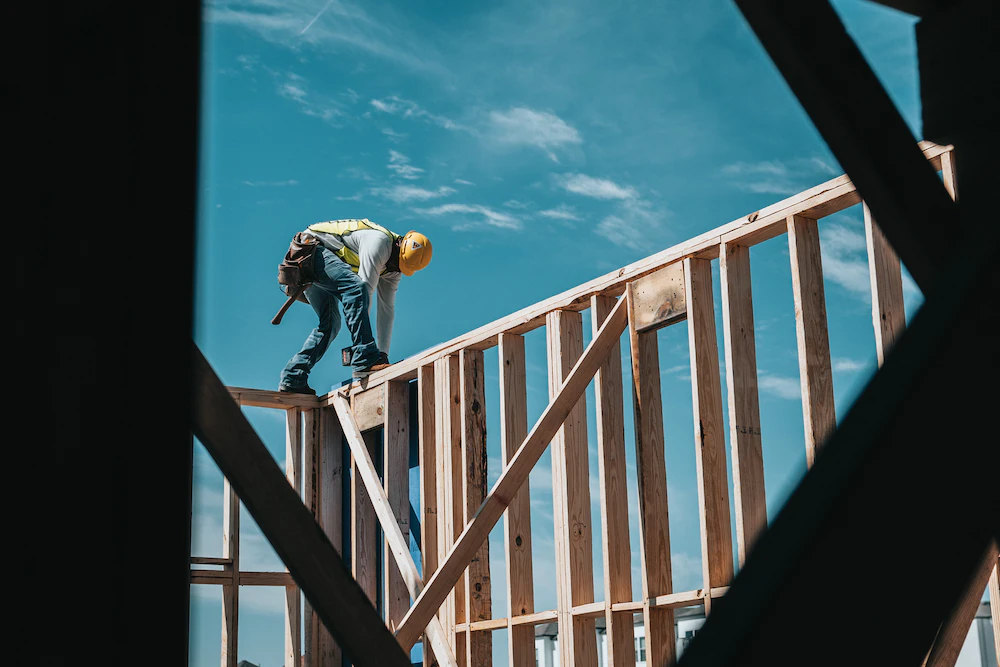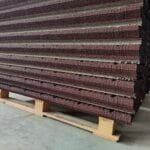Roofing is an essential aspect of any building, protecting it from the elements and ensuring its longevity. Over the years, the roofing industry has witnessed significant advancements in technology and materials, leading to a revolution in the way roofs are designed, constructed, and maintained. This article explores the role of roofing innovation in driving success within the industry, highlighting the advantages of using innovative roofing materials, energy-efficient solutions, durable options, and sustainable practices.
The impact of roofing innovation on the industry
Roofing innovation has had a transformative impact on the industry, revolutionizing the way projects are executed and the results they deliver. Advancements in technology and materials have allowed for more efficient installation processes, reduced costs, and improved durability. With the introduction of innovative roofing solutions, contractors can now offer their clients a wide range of options that not only enhance the aesthetic appeal of the building but also provide long-term benefits in terms of energy efficiency and sustainability.
Advantages of using innovative roofing materials
Innovative roofing materials have become increasingly popular in recent years due to their numerous advantages over traditional options. One of the key benefits is enhanced durability. Manufacturers are now producing roofing materials that are more resistant to weathering, UV radiation, and extreme temperatures, resulting in roofs that last longer and require less maintenance. Additionally, these materials offer improved insulation properties, providing better thermal comfort and reducing energy consumption.
Moreover, innovative roofing materials are designed to improve energy efficiency. By incorporating reflective coatings and insulation layers, they help reduce heat transfer and minimize the need for air conditioning, thereby lowering energy bills. These materials also contribute to the sustainability of buildings by reducing the overall carbon footprint. With eco-friendly options such as recycled content or materials that can be recycled at the end of their lifespan, innovative roofing materials align with the growing demand for sustainable construction practices.
Energy-efficient roofing solutions
Energy efficiency is a crucial aspect of roofing innovation, as it not only benefits the environment but also helps building owners save on utility costs. Energy-efficient roofing solutions employ various strategies to minimize heat gain and loss. For instance, cool roofs utilize reflective materials to reduce solar heat absorption, keeping the building cooler and reducing the need for air conditioning. Green roofs, on the other hand, involve the installation of vegetation, which helps insulate the building and reduce heat island effects in urban areas.
Another innovative solution is the integration of solar panels into roofing systems. Solar roofs generate clean and renewable energy, reducing reliance on fossil fuels and providing a sustainable source of power for the building. These energy-efficient solutions not only contribute to the reduction of greenhouse gas emissions but also offer long-term cost savings for building owners.
Durable and long-lasting roofing options
In addition to energy efficiency, roofing innovation has led to the development of more durable and long-lasting options. Traditional roofing materials often require frequent maintenance and replacement due to wear and tear caused by weather conditions and aging. However, with the introduction of innovative materials such as synthetic roofing membranes and metal roofing, building owners now have access to more resilient options.
Synthetic roofing membranes, such as thermoplastic olefin (TPO) and ethylene propylene diene monomer (EPDM), offer excellent resistance to UV radiation and extreme weather conditions. These materials are flexible, allowing for easy installation and reducing the risk of leaks. Metal roofing, on the other hand, provides exceptional durability, withstanding high winds, hail, and fire. These innovative options not only provide long-term protection for the building but also reduce the need for frequent repairs and replacements, ultimately saving building owners time and money.
Sustainable roofing practices
As sustainability becomes increasingly important in the construction industry, roofing innovation plays a vital role in promoting environmentally friendly practices. One such practice is the use of recycled materials in roofing systems. Manufacturers are now incorporating recycled content into their products, reducing the demand for virgin materials and minimizing waste. Additionally, some roofing materials are designed to be easily recyclable at the end of their lifespan, further reducing their environmental impact.
Another sustainable roofing practice is the implementation of rainwater harvesting systems. These systems collect and store rainwater, which can then be used for various purposes such as irrigation or flushing toilets. By utilizing rainwater, buildings can reduce their reliance on municipal water sources, conserving this precious resource. Sustainable roofing practices not only benefit the environment but also help building owners achieve green building certifications and attract environmentally conscious tenants.
The future of roofing innovation
The future of roofing innovation looks promising, with continuous advancements in technology and materials. One area of focus is the development of smart roofs. These roofs incorporate sensors and intelligent systems that monitor and optimize various aspects such as temperature, humidity, and energy consumption. Smart roofs can automatically adjust their properties based on weather conditions, enhancing energy efficiency and occupant comfort.
Another area of innovation is the integration of renewable energy technologies into roofing systems. Building-integrated photovoltaics (BIPV) are becoming increasingly popular, allowing roofs to generate electricity through the use of solar panels integrated seamlessly into the building’s design. Additionally, advancements in nanotechnology may lead to the development of self-cleaning and self-repairing roofing materials, reducing maintenance requirements and extending the lifespan of roofs.
Case studies of successful roofing innovation projects
Several case studies highlight the successful implementation of roofing innovation in various projects. One such example is the Bank of America Tower in New York City. This skyscraper incorporates an innovative double-skin curtain wall system, which provides thermal insulation and reduces energy consumption. The tower’s roof features a green roof, contributing to the building’s sustainability goals.
Another notable case study is the Bullitt Center in Seattle. This net-zero energy building utilizes a combination of solar panels and a rainwater harvesting system to meet its energy and water needs. The building’s roof is equipped with a cool roof system, reducing heat gain and lowering cooling demands. These case studies demonstrate the positive impact of roofing innovation on building performance and sustainability.
Choosing the right roofing contractor for innovative projects
When embarking on innovative roofing projects, selecting the right contractor is crucial. It is essential to work with a contractor who has expertise in the specific type of roofing system or material being used. Look for contractors who have a proven track record in delivering successful innovative projects and can provide references. Additionally, ensure that the contractor is licensed, insured, and knowledgeable about local building codes and regulations.
Communication is key when working with a roofing contractor for an innovative project. Clearly discuss your expectations, timeline, and budget, and ensure that the contractor understands your goals. Transparent and open communication will help avoid misunderstandings and ensure the smooth execution of the project. Finally, consider the contractor’s warranty and after-sales service. A reputable contractor should provide a comprehensive warranty and be available for any future maintenance or repairs.
Conclusion: Embracing the future of roofing innovation
Roofing innovation has revolutionized the industry, offering numerous advantages in terms of durability, energy efficiency, and sustainability. By embracing innovative roofing materials and practices, building owners can not only enhance the performance and longevity of their roofs but also contribute to a greener and more sustainable future. It is crucial to stay up-to-date with the latest advancements in roofing technology and collaborate with experienced contractors who can deliver successful innovative projects. As we move forward, let us embrace the future of roofing innovation and drive success in the industry.
Here at SKWRoof, we continuously pursue innovation in materials and craftsmanship, aiming to provide our customers with superior roof products. Contact us today to discuss how our innovative roofing solutions can benefit your next project.




